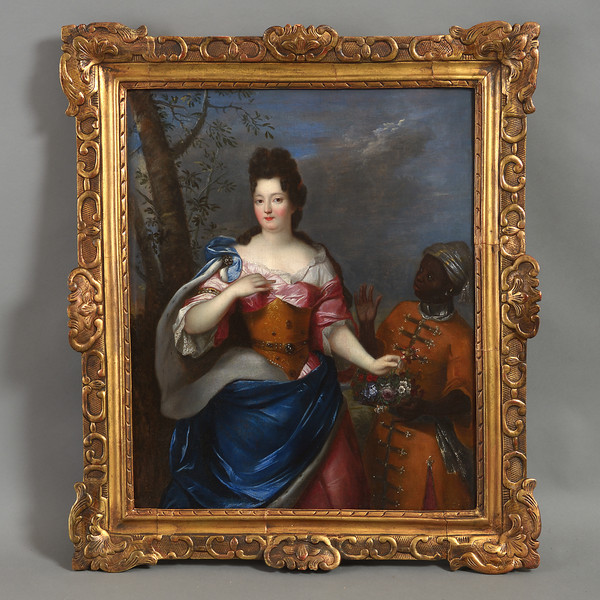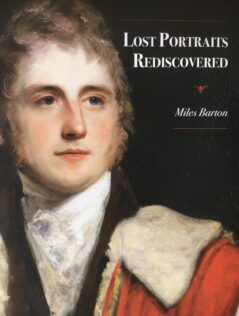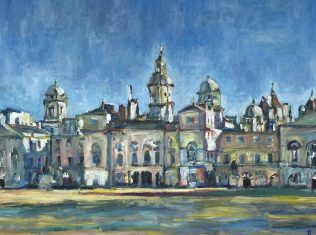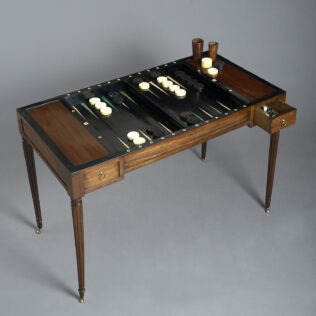Pictures, Special Reports
Women in History: A Closer Look at Four Portraits featuring Georgiana, Duchess of Devonshire, the Marquise de Maintenon, Louise de Bourbon and a Portrait of a Lady
Taking a closer look at four portraits available to view at Timothy Langston Fine Art & Antiques featuring women in history: Georgiana, Duchess of Devonshire, the Marquise de Maintenon, Louise de Bourbon and a Portrait of a Lady.
Georgiana, Duchess of Devonshire was a social icon, author and political activist. She was as famous for her beauty and charisma – as much as she was for socialising and gambling! She was a truly incredible person who was born into a political family. She supported Charles James Fox and Charles Grey in their political beliefs. Her marriage was was quite extraordinary. The 5th Duke was quite a cold and reserved individual. Georgiana worked against this and that’s what propelled her into the public life. Georgiana, herself actually described her life as a vortex of dissipation. She was recently brought back to life the 2008 film The Duchess starring Keira Knightley.
This portrait by John Downman was painted that we see is the high point of the artist’s career in the mid 1780s which also dovetailed with the high point Georgiana’s public career. It was in the 1784 election that she was campaigning quite vigorously for the Whig cause. When we look at her face in this picture we get the impression that there is something mischievous about her … as if her agenda is greater than simply sitting for an attractive picture.
The Marquise de Maintenon is a lady with the same formidable attitude that Georgiana possessed, only we see her 100 years earlier in history. She epitomises the rags to riches story. Born in a prison in 1635 to a murderous and treacherous father, at 15 she’s in a convent and shortly afterwards marries the 42 year old Paul Scarron, who is a witty intellectual who holds a salon in the Marais district of Paris. And it is through this sort of boiling pot of 17th Century glitterati that the Marquise de Maintenon eventually ends up meeting the mistress of Louis XIV and then goes on to be his mistress. So by the 1680s she is in all but name the Queen of France. And, after a period of time, does indeed become the uncrowned Queen of France.

In the painting she is swathed in the blue cloak with a very subtle ermine streak which is implying a regal status, but not overly emphasising it because her marriage was kept from the public quite secret. The picture is therefore a subtle reference to her status. A beautiful detail is the black servant bending forward with the posy of flowers. Flowers always have this resonance in art denoting the transience of life, the transience of perhaps her social status even. But she became, from very humble beginnings, the Queen of France in all her majesty at Versailles.
One the charges of the Marquise de Maintenon when she became the Governess of Louis’s illegitimate children happens to be portrayed in this little picture here. It’s Louise de Bourbon, who was the eldest legitimatised daughter of Louis XIV, and as such meant that she could carry titles. She went on to become the Princess de Condé and Duchess of Bourbon. The hair that she has is very much a fashionable attribute of that time in the way its plied up high. It shows her as a very attractive lady, which she was, and she had many alliances at court due to her beauty and the ways she managed to use that to her advantage.
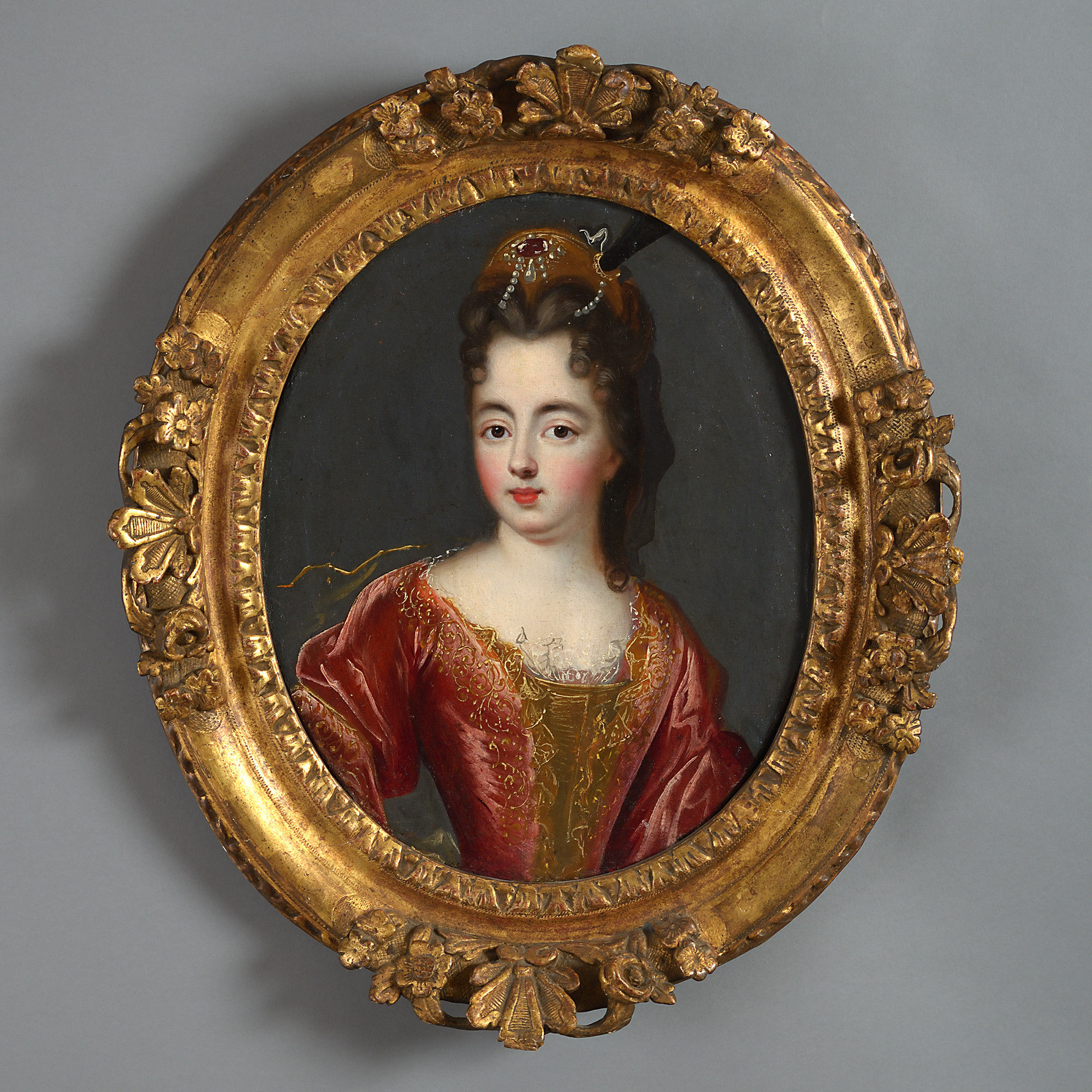
Finally this small pastel from the 1780s depicts rather than a portrait of someone we know, a portrait in which the image of a woman is alluding to a Classical goddess; in this case Venus. The arrow references the love story between Venus and Adonis, which was when Cupid’s arrow grazes Venus and she then turns and sees Adonis and falls helplessly and hopelessly in love. We see one particular artist that seems to shine through as a source of influence: François Boucher. He was a major French painter of the period and was a key artist in the development of sensuality in art in France in this period.
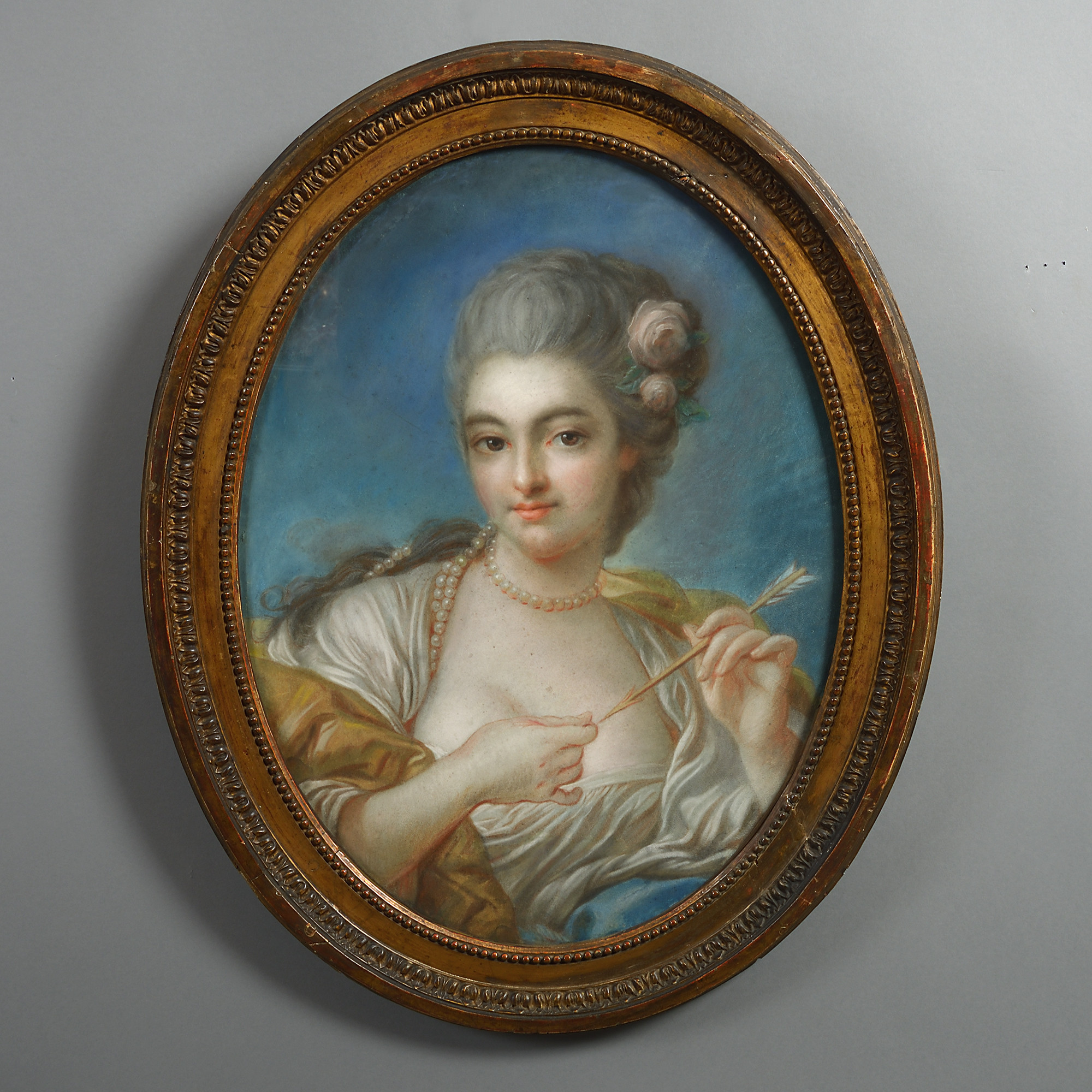
So to conclude here are four exceptional ladies depicted in equally exceptional ways and circumstances through a period of time from the late 17th century all the way through to the late 18th century and they show us individuals living at particular moments in history and are captivating because of it. You can see these pictures and many others at Timothy Langston Fine Art & Antiques on Pimlico Road and also on our website www.timothylangston.com

